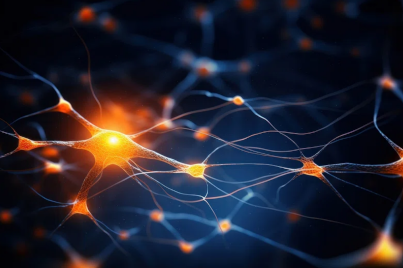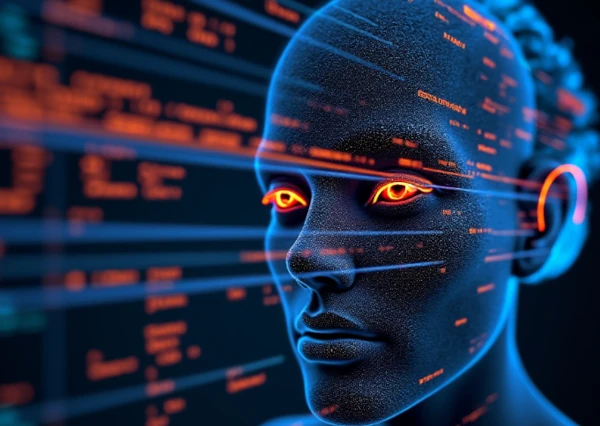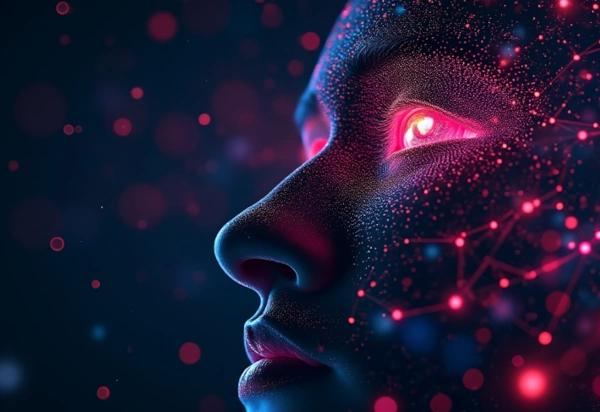PyTorch Deep Learning: Transforming AI and Machine Learning
In the rapidly evolving landscape of artificial intelligence (AI) and machine learning, PyTorch has emerged as a leading framework, providing powerful tools for developing and deploying deep learning models.
As an open-source machine learning library, PyTorch is renowned for its flexibility, ease of use, and dynamic computational graph, making it a preferred choice for researchers and practitioners alike.
PyTorch for Machine Learning
PyTorch offers a robust platform for machine learning, enabling developers to build, train, and deploy models with remarkable efficiency. Its intuitive design facilitates quick experimentation and iterative model development, which is crucial for machine learning tasks.
PyTorch's seamless integration with Python and its support for dynamic graphs allow users to construct complex models with less boilerplate code, enhancing productivity and creativity.

Key Features of PyTorch
Dynamic Computational Graphs: Unlike static graph frameworks, PyTorch uses a define-by-run approach, allowing for more flexible and intuitive model design.GPU Acceleration: PyTorch provides native support for CUDA, enabling efficient training on NVIDIA GPUs.
Extensive Library Ecosystem: With libraries like torchvision, torchaudio, and torchtext, PyTorch offers specialized tools for various domains.
Automatic Differentiation: PyTorch's autograd package enables automatic computation of gradients, simplifying the implementation of backpropagation.
AutoML PyTorch
AutoML (Automated Machine Learning) is another area where PyTorch shines, simplifying the process of model selection, hyperparameter tuning, and optimization. AutoML PyTorch tools automate these tasks, making it easier for users to achieve high-performance models without deep expertise in model tuning.
By leveraging AutoML PyTorch solutions, developers can focus more on solving business problems and less on the intricacies of model optimization. This democratization of machine learning allows a broader range of professionals to harness the power of AI and deep learning.
Advancements in AutoML with PyTorch
Recent developments in AutoML for PyTorch have led to more sophisticated approaches:Neural Architecture Search (NAS): PyTorch supports various NAS techniques, allowing for automated discovery of optimal neural network architectures.
Hyperparameter Optimization: Libraries like Optuna integrate seamlessly with PyTorch, providing powerful hyperparameter tuning capabilities.

PyTorch Deep Learning and Artificial Intelligence
PyTorch's impact on deep learning and artificial intelligence is profound. Its dynamic computation graph, known as "define-by-run," allows for more flexibility and ease of debugging compared to static graph frameworks. This characteristic is particularly beneficial for deep learning tasks, where model architectures can be complex and require frequent modifications.
PyTorch's support for GPU acceleration further enhances its capability, enabling the efficient training of large-scale models that are essential for advanced AI applications. This has led to breakthroughs in various AI domains, including natural language processing, computer vision, and reinforcement learning.
Advanced Deep Learning Techniques
Transfer Learning: PyTorch facilitates easy implementation of transfer learning, allowing models to leverage pre-trained weights for new tasks.Generative Adversarial Networks (GANs): The framework's flexibility makes it ideal for implementing complex GAN architectures.
Reinforcement Learning: PyTorch's dynamic nature is particularly suited for reinforcement learning algorithms, where model structures may change during training.

Cutting-Edge AI Research with PyTorch
PyTorch has become the framework of choice for many cutting-edge AI research projects:Transformers and Attention Mechanisms: PyTorch's flexibility has made it ideal for implementing complex attention-based models like BERT and GPT.
Graph Neural Networks (GNNs): PyTorch Geometric, an extension library, provides tools for working with graph-structured data, enabling advancements in areas like social network analysis and molecular property prediction.
Federated Learning: PyTorch supports federated learning techniques, allowing for privacy-preserving distributed model training.
TensorFlow and PyTorch
While TensorFlow has traditionally been a dominant force in the deep learning space, PyTorch has gained significant traction due to its user-friendly approach and strong research community. Both frameworks have their strengths: TensorFlow offers a comprehensive ecosystem and production-ready tools, while PyTorch provides a more intuitive and flexible experience.
The choice between TensorFlow and PyTorch often depends on specific project needs and user preferences, but PyTorch's growing popularity in academic research and its expanding ecosystem make it a compelling choice for many.

PyTorch for Computer Vision
In the realm of computer vision, PyTorch is particularly powerful. Its libraries and modules, such as torchvision, provide pre-built models and tools for tasks like image classification, object detection, and segmentation. PyTorch for computer vision enables developers to implement state-of-the-art models with ease and integrate them into applications ranging from medical imaging to autonomous vehicles.
The library's support for advanced features like transfer learning and data augmentation further enhances its utility in computer vision projects. Researchers and practitioners can quickly adapt pre-trained models to new tasks, significantly reducing development time and computational resources required.
Computer Vision Applications
Image Classification: PyTorch offers implementations of popular architectures like ResNet, VGG, and Inception.Object Detection: Frameworks like Faster R-CNN and YOLO can be easily implemented and fine-tuned using PyTorch.
Semantic Segmentation: Models like U-Net and DeepLab are readily available in the PyTorch ecosystem.
Generative Models: PyTorch's flexibility makes it ideal for implementing complex generative models like StyleGAN.
Advanced Computer Vision Techniques
PyTorch facilitates the implementation of cutting-edge computer vision techniques:Instance Segmentation: Models like Mask R-CNN can be easily implemented and fine-tuned using PyTorch.
3D Computer Vision: PyTorch3D extends PyTorch's capabilities to 3D data, enabling advancements in areas like 3D object reconstruction and scene understanding.
Video Understanding: PyTorch provides tools for working with video data, supporting tasks like action recognition and video captioning.

PyTorch's Ecosystem
TorchScript: Allows for seamless transition between eager mode and graph mode, enabling both flexibility in development and efficiency in production.TorchServe: Provides a flexible and easy-to-use tool for serving PyTorch models in production environments.
PyTorch Lightning: Offers a high-level interface for organizing PyTorch code and accelerating the development process.
Captum: Provides model interpretability and explanations for PyTorch models. PyTorch's active community and continuous development ensure that it remains at the forefront of advancements in AI and machine learning. The framework's adoption by major tech companies and research institutions further solidifies its position as a leading tool in the field.
PyTorch's Impact on Research and Industry
PyTorch's influence extends across both academic research and industrial applications:Research Reproducibility: PyTorch's clear syntax and dynamic nature make it easier for researchers to share and reproduce results, fostering collaboration in the AI community.
Industry Adoption: Major tech companies like Facebook, Microsoft, and Uber have adopted PyTorch for various AI projects, demonstrating its scalability and reliability in production environments.
Cross-Platform Development: PyTorch Mobile enables the deployment of models on iOS and Android devices, bridging the gap between research and mobile applications.

Navigating the Horizon: PyTorch's Evolutionary Trajectory
As PyTorch continues to evolve, several key areas are likely to see significant development:Distributed Training: Enhancing capabilities for training models across multiple GPUs and machines.
Edge Deployment: Improving tools for deploying PyTorch models on edge devices and mobile platforms.
Integration with Other AI Technologies: Expanding interoperability with other AI frameworks and tools.
Addressing Ethical AI Concerns: Developing tools and practices to ensure responsible AI development using PyTorch.
While PyTorch has made great strides, challenges remain in areas such as model interpretability, efficient deployment at scale, and addressing the environmental impact of training large models. The PyTorch community and developers are actively working on these issues, promising exciting developments in the near future.
Deep Learning PyTorch: A Powerful Toolset
Deep learning with PyTorch encompasses a wide array of techniques and applications. From training neural networks to developing sophisticated AI models, PyTorch provides a comprehensive set of tools and libraries. Its flexibility and ease of use make it an ideal choice for experimenting with novel architectures and techniques in deep learning. PyTorch's active community and continuous development ensure that it remains at the forefront of advancements in AI and machine learning.
PyTorch has established itself as a cornerstone in the field of deep learning and artificial intelligence. Its capabilities in machine learning, AutoML, computer vision, and its dynamic approach to model development make it a powerful tool for both researchers and practitioners.

Forging the AI Frontier: PyTorch's Transformative Impact
In summary, PyTorch has established itself as a cornerstone in the field of deep learning and artificial intelligence. Its capabilities in machine learning, AutoML, computer vision, and its dynamic approach to model development make it a powerful tool for both researchers and practitioners. As the field continues to evolve, PyTorch's contributions to AI and deep learning will undoubtedly drive further innovation and progress.The framework's user-friendly nature, combined with its powerful features, positions it at the forefront of AI research and development. Whether for academic research, industrial applications, or personal projects, PyTorch offers a versatile and robust platform for exploring the frontiers of artificial intelligence and machine learning.
As we look to the future, PyTorch's role in shaping the AI landscape appears set to grow, promising exciting advancements and breakthroughs in the field of deep learning and beyond.
Find more about AI and ML here: ML AI News.
Machine Learning Artificial Intelligence News
https://machinelearningartificialintelligence.com
AI & ML



Sign Up for Our Newsletter